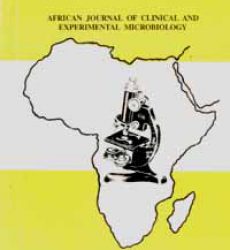[1],[2],[3]Famurewa, B. A., 1,2Uwanibe, J. N., 1,2Olawoye, I. B., 2Eromon, P., 3Aregbesola, S. B., 3Oginni, F. O., 1,2Happi, C. T., and *1,2Folarin, O. A.
1Department of Biological Sciences, College of Natural Sciences, Redeemer’s University, PMB 230, Ede, Osun State, Nigeria
2African Center of Excellence for the Genomics of Infectious Diseases (ACEGID), Redeemer’s University, PMB 230, Ede, Osun State, Nigeria
3Department of Oral and Maxillofacial Surgery, Obafemi Awolowo University Teaching Hospitals Complex, Ile-Ife, Osun State, Nigeria *Correspondence to: folarino@run.edu.ng; ORCID No: 0000-0001-7283-2920
Abstract:
Background: Genomics surveillance and characterization of pathogens have enabled prompt and accurate diagnosis, for improved management and control of infectious diseases. This study aimed to identify bacteria associated with spreading odontogenic infections (SOIs) among patients visiting the Dental Center of the Obafemi Awolowo University Teaching Hospitals Complex (OAUTHC), Ile-Ife, Nigeria, by sequencing 16S rRNA gene of the bacteria.
Methodology: This was a cross-sectional study of 15 participants with clinically confirmed SOIs. Pus samples were obtained from the participants and stored at -800 C until ready for analysis. DNA was extracted from the pus samples using the Quick-DNATM Miniprep Plus Kit. Polymerase chain reaction (PCR) was used to amplify the V1-V9 regions of the 16S rRNA gene. Successfully amplified samples were cleaned up and next generation sequencing (NGS) technique was used to sequence the bacterial 16S rRNA gene. Sequence data were analyzed
using Geneious Prime version 2021.2.2 which used Ribosomal Database Project Tools to assign genus and higherlevel taxonomy.
Results: Multiple genera of bacteria were detected in individual sample. The detected and identified bacteria belonged to Firmicutes, Bacteroidetes, Fusobacteria, Actinobacteria, Proteobacteria, Tenericutes and Spirochaetes phyla. Detected predominant bacterial genera were Streptococcus, Prevotella, Peptostreptococcus,
Parvimonas and Porphyromonas. Some novel bacteria identified include Legionella, Taonella, Ferrovibro,
Holdemania, and Limnobacter.
Conclusion: Bacteria detected in this study include previously reported bacteria associated with SOIs and novel bacteria, with preponderance of anaerobes.
Keywords: Spreading odontogenic infection, 16S rRNA, Next Generation Sequencing (NGS), Oral microbiota
Download this Article in PDF format below

